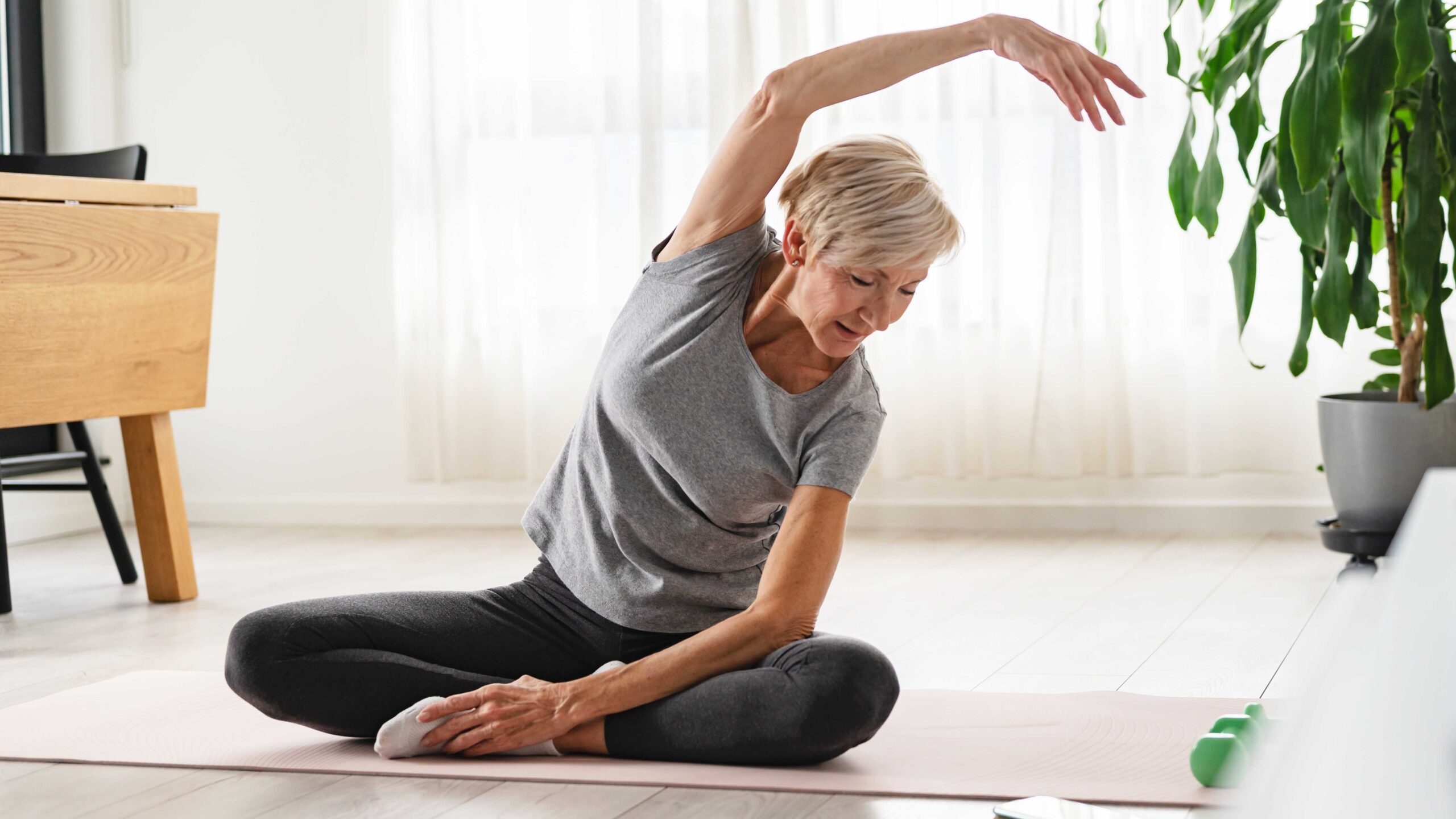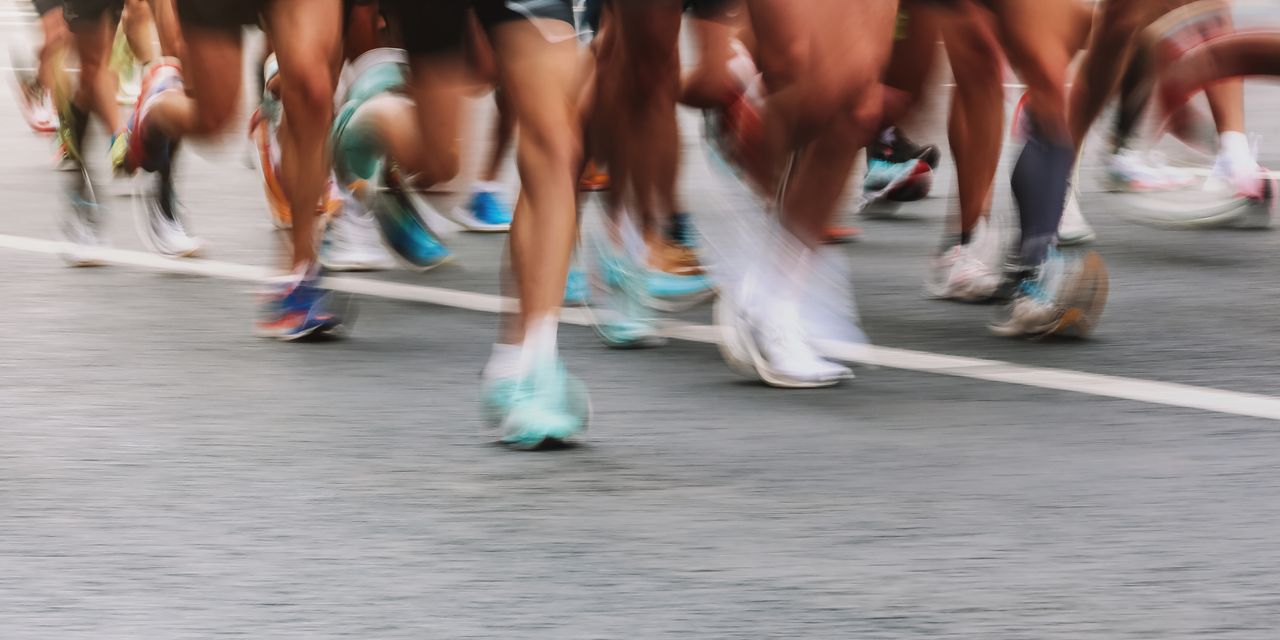Blog
Over 60? Forget walking and swimming — unlock healthy aging with these 5 simple daily exercises

Mobility might not get the same attention as cardio or strength training, but if you’re over 60, it’s one of the most important things you can do for your body. Good mobility helps you move with ease — whether that means staying comfortable on daily walks, reaching overhead without strain, or keeping up with your favorite activities as you age. It’s also said to increase longevity, with research indicating that even simple mobility measures — like how fast someone walks (gait speed) or moves through everyday motions — are strong predictors of lifespan, independence, and quality of life.
The good news? You don’t need intense workouts or complicated routines to scale your mobility. A few minutes of low-impact, intentional movement each day can help maintain — and improve — your range of motion in key areas like the hips, shoulders, and spine.
In this guide, we’ve rounded up five simple daily mobility exercises that are especially beneficial for older adults. They’re gentle, effective, and easy to incorporate into your day — no gym required.
Why does mobility matter more over 60?
As we get older, our joints naturally lose some of their flexibility, and muscles can become tighter and less responsive. Reduced mobility can make everyday movements harder and increase the risk of falls or injury, even for people who stay relatively active.
Targeted mobility exercises can be really helpful, especially when performed consistently. The five exercises below are low-impact and easy to follow, and they focus on key areas, including the hips, shoulders, spine, knees, and ankles. Done daily, they can improve movement quality, reduce stiffness, and help you keep doing the activities you enjoy for longer.
1. Cat-cow stretch
The cat-cow stretch is a classic yoga move, but it’s widely recommended by physiotherapists and trainers for improving spinal flexibility. It gently moves the spine through flexion and extension — helping to release tension in the back, neck, and shoulders while activating your core muscles.
Start on all fours with your hands under your shoulders and knees under your hips. Gently arch your back, lift your head and tailbone, and let your belly drop — this is “cow.” Then, round your spine upward, tuck your chin, and draw your belly in — this is “cat.” Engaging your breath by inhaling as you arch and exhaling as you round can help you move more fluidly between positions and improve your control through the full range of motion.
Aim for as many reps as feels comfortable.
2. 90/90 hip switch

Watch On
The 90/90 hip switch is one of the best mobility drills for happy hips. It’s similar to the 90/90 hip stretch — a static version often used to release tight glutes — but this variation adds gentle movement to improve hip mobility. By rotating between sides, you target internal and external hip rotation — essential for walking, squatting, and getting up from the floor. It’s low-impact, joint-friendly, and great for maintaining hip function as you age.
Start seated on the floor with one leg bent at 90 degrees in front of you and the other at 90 degrees behind, so your knees point in opposite directions. Your front thigh should align with your torso, and your back thigh should extend out to the side. Keep your chest upright and hold your arms out in front of you. Slowly rotate your hips to switch sides, keeping both knees bent — aim for control, not speed.
Do 6–8 reps (3–4 each side), focusing on smooth, steady transitions.
3. Standing wall angels
Wall angels are a simple but effective move that work on shoulder mobility, posture, and upper back activation — all areas that tend to get tighter with age. They help open up the chest, improve posture, and retrain your body to move with better alignment.
Just as you would with wall squats, start by standing with your back against the wall, feet about six inches away from the base. Flatten your lower back gently toward the wall, then raise your arms so your elbows and the backs of your hands are in contact with the wall, forming a goalpost or “W” shape. Slowly slide your arms upward toward a “Y” shape, then back down — keeping them as close to the wall as possible.
Start with 6–8 slow reps, and don’t worry if your hands or arms lift slightly off the wall — we’re aiming for controlled movement through your available range, not perfection. Over time, wall angels can help reduce stiffness and support healthy, pain-free shoulder movement. They’re a great one to add to your daily movement routine.
4. Ankle circles

Watch On
Ankle mobility often gets overlooked, but it’s essential for balance, stability, and smoother walking as we age. Ankle circles are a simple, effective way to increase range of motion and reduce stiffness — they’re perfect if your ankles feel tight after sitting or when walking on uneven ground.
You can do this standing (using a wall or chair for support) or seated. Shift your weight onto one foot and lift the other foot up, with your knee bent at 90 degrees. Begin drawing slow, controlled circles with your foot — 5–10 in one direction, then reverse. Focus on moving from the ankle joint, not the leg, and keep the motion as smooth and steady as possible. Repeat on the other side.
Want to add more of a challenge? After your circles, try gently tapping your toes forward and back, or side to side. This mimics the kind of movement your ankles use during real-world activities like walking, stepping, or changing direction.
5. Standing knee raises and extensions
Keeping your knees strong is essential for walking, climbing stairs, and getting up from chairs with ease — but stiffness or discomfort in the knees is a common reality for people over 60. This gentle mobility move works the knees through a full range of motion without loading the joint, making it ideal for daily practice.
Stand tall next to a wall or chair for support. Shift your weight to one leg, and slowly lift the opposite knee to hip height (or as high as feels comfortable). You can either lower the leg and repeat, or you can extend your lower leg out in front of you, hold for a second, then bend the knee again and lower your foot to the floor. Adding the leg extension helps strengthen the quads and improves control through the full range of motion in the knee joint.
Aim for 6–8 reps per leg, focusing on control, not height. This not only supports healthy knee function, but also engages the muscles around the joint — like the quads, hamstrings, and hip flexors — to help with strength and stability.
You don’t need intense workouts to stay mobile and strong — just a few minutes of focused movement each day can make a big difference. These simple exercises are a great place to start if you want to move better, feel better, and stay active as you age.
Follow Tom’s Guide on Google News to get our up-to-date news, how-tos, and reviews in your feeds. Make sure to click the Follow button.












